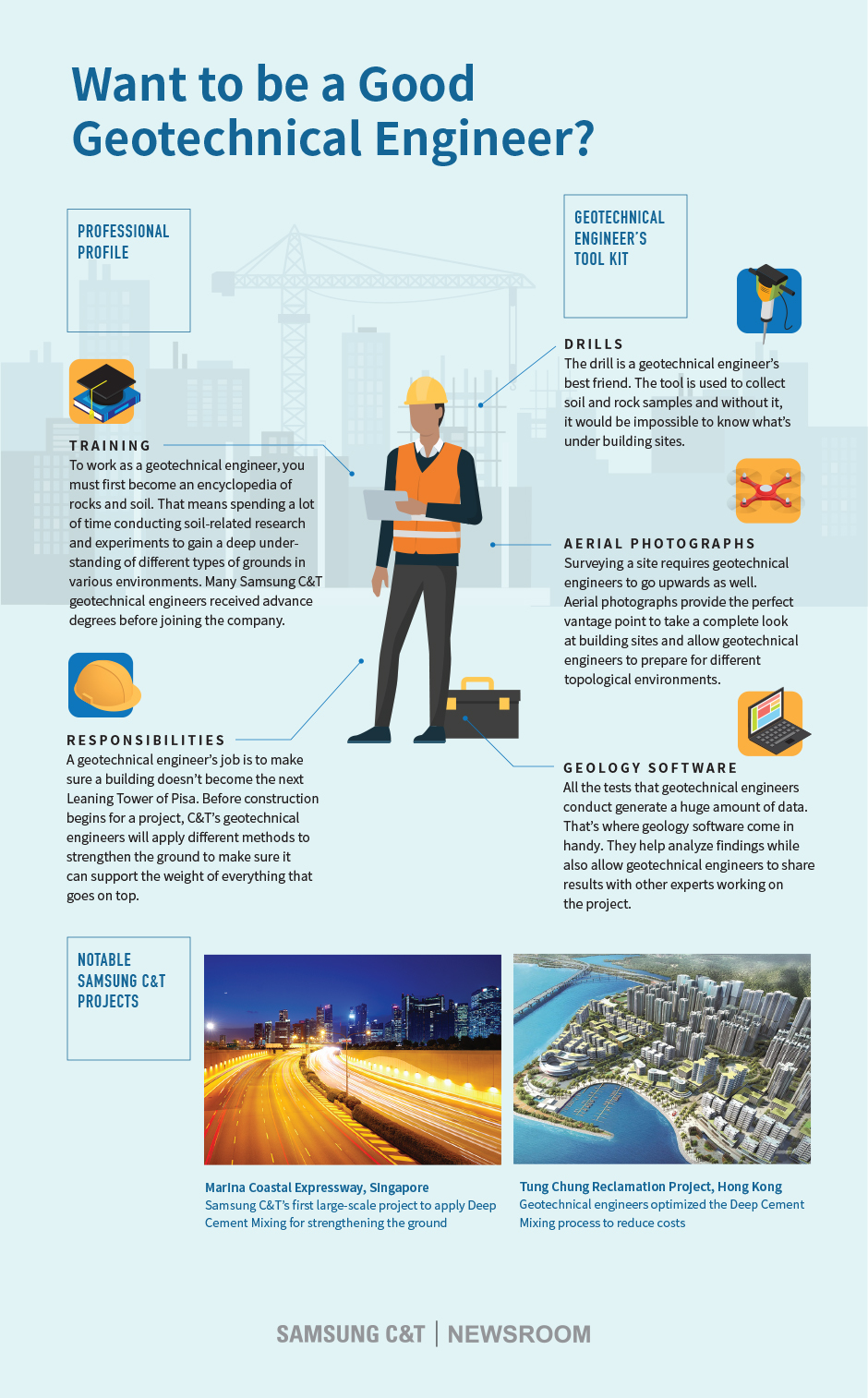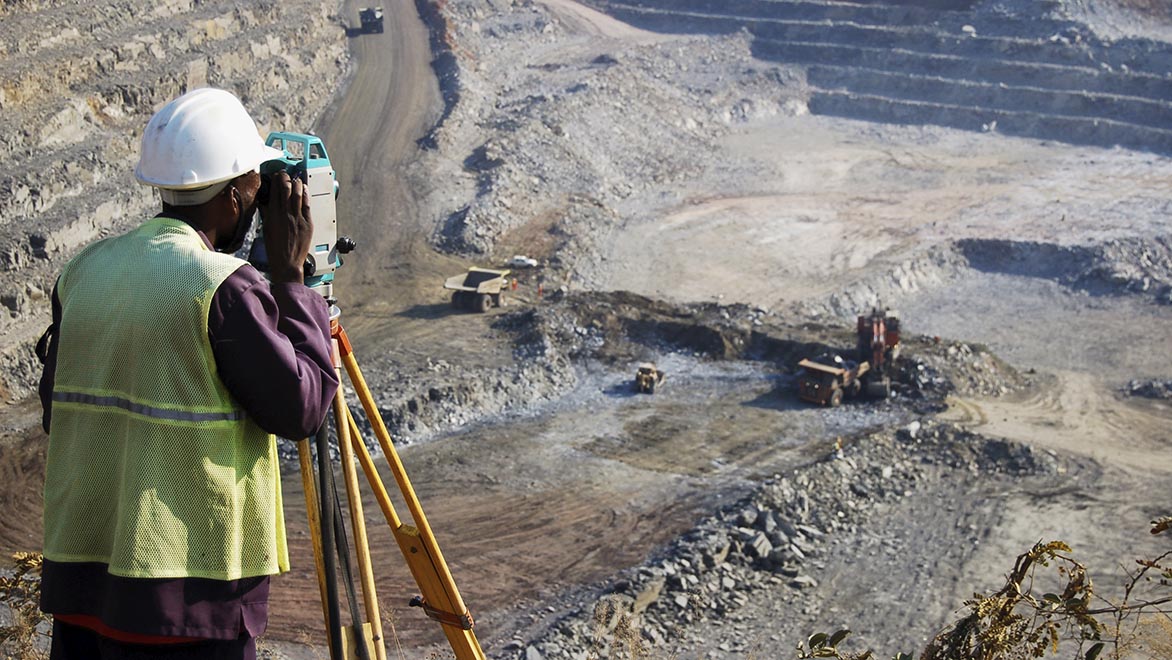The Ultimate Guide To Geotechnical Engineering For Construction Projects
The Ultimate Guide To Geotechnical Engineering For Construction Projects
Blog Article
About Geotechnical Engineering For Construction Projects
Table of ContentsSome Known Details About Geotechnical Engineering For Construction Projects Some Known Incorrect Statements About Geotechnical Engineering For Construction Projects Some Ideas on Geotechnical Engineering For Construction Projects You Should KnowGeotechnical Engineering For Construction Projects Fundamentals ExplainedGeotechnical Engineering For Construction Projects Can Be Fun For EveryoneLittle Known Questions About Geotechnical Engineering For Construction Projects.The smart Trick of Geotechnical Engineering For Construction Projects That Nobody is Talking AboutThe Geotechnical Engineering For Construction Projects Ideas
Corresponding with this raised intricacy comes geological and ecological factors that impact the layout of the structure, which is probably the most crucial part of any type of advancement. People need to rely on that buildings, bridges, and highways will certainly stand the examination of time. A Geotechnical designer encourages on just how a framework can best be sustained giving its one-of-a-kind circumstances What's hidden below the surface area of the ground is likely one of the most important item of info that a Geotechnical Designer is after.These examples are after that assessed by the laboratory to establish dirt make-up (Geotechnical Engineering for Construction Projects). The failure of sand, silt, clay, and various other products existing in the soil, helps the designer identify what one-of-a-kind features the website has and what the implications of those may be. Naturally soil make-up is just one test that can be executed on samples
All about Geotechnical Engineering For Construction Projects
Based upon these examinations, there might be a lot more soil borings that are pierced, or the designer might have adequate information from the first tests to make a referral to the customer on just how ideal to continue with their task. Outcomes are usually reported through borings logs which show the dirt composition and features at a selection of depths.
Geotechnical designers are accountable for understanding the buildings of all-natural sources and using this expertise to develop safe, affordable styles for building and construction tasks. It is a vital component of any type of civil design job, as it is used to establish the viability of a website for building and to make certain the framework's safety and security.
This consists of performing laboratory tests on the samples and using geophysical methods such as seismic refraction and electrical resistivity studies. This information is utilized to assess the site's viability for building and to figure out the kind of foundation that should be used. Geotechnical engineering analyzes dirt problems, determines potential threats, chooses a suitable foundation system for the proposed framework, and establishes the very best structure layout for an offered job.
Things about Geotechnical Engineering For Construction Projects
The framework may end up being unpredictable or collapse without appropriate dirt stabilisation, resulting in expensive repair services and potential injury. The stablizing procedure entails utilizing various methods to enhance the stability of the soil, such as compaction, grouting, and the addition of strengthening materials. Without dirt stablizing, the threats related to building projects would certainly be a lot higher, and the outcomes much less trusted.
Geotechnical designers conduct site investigations to analyze the soil's buildings and recognize potential dangers. They create and implement dirt stabilization strategies, such as adding concrete, lime, or other supporting representatives, to improve the soil's toughness and security.
Little Known Facts About Geotechnical Engineering For Construction Projects.
Geotechnical engineers are necessary in assisting to ensure that dirt stabilization is done properly to make sure that the framework is risk-free and secure. Geotechnical design is also made use of to evaluate dirt conditions and determine potential dangers. This includes analyzing More Info prospective flooding, landslides, and various other natural calamities that might affect the foundation.
Geotechnical engineers utilize this understanding to carry out website investigations, soil, and rock screening, and to interpret the outcomes to identify the appropriate layout specifications for a job. This information is utilized to make sure that the structure, maintaining wall surfaces, slopes, and various other structures built on or within the subsurface products have adequate security and resistance to outside tons, such as quakes, wind, and water.
These structures call for a deep understanding of the This Site behavior of the subsurface materials, as well as the ability to handle the influence of excavation and construction on the surrounding atmosphere. Geotechnical designers use their competence to establish the appropriate design parameters for these structures, such as the size and shape of the tunnel, the stamina of the sustaining rock, and the kind and quantity of assistance needed.
Along with the layout and construction of structures, geotechnical engineering additionally plays an important role in the recovery and maintenance of existing frameworks. As structures age, they might experience destruction or other problems that affect their stability and efficiency. Geotechnical designers utilize their knowledge to examine the problem of these frameworks, recognize the sources of the problems, and develop techniques to address them.
The Definitive Guide to Geotechnical Engineering For Construction Projects
In this post, I will certainly review the duty of geotechnical engineering and the sorts of problems geotechnical engineers fix. Geotechnical engineers (geotechs) are involved in nearly navigate to this site every kind of civil engineering task. Every structure is sustained by soil or rock unless it is drifting, flying, or dropping down.
Geotechs are usually most involved at the beginning of a task. Geotechnical Engineering for Construction Projects. Some of the jobs that a geotech might be accountable for are examining subsurface problems, determining needed laboratory testing of dirt and rock, interpreting the subsurface expedition results, and creating records that record the website problems and supply recommendations for foundations, fill specifications, incline security, and so on
It is not unusual for geotechnical designers to focus on just one of the locations noted above and examine that subject their whole occupation. Geotechnical design is a vital aspect of any type of civil engineering job. Despite how wonderful a structure is developed, it will certainly not be great for long if the foundation is poor.
Some Ideas on Geotechnical Engineering For Construction Projects You Should Know

Sometimes, points that might not seem important end up being important years later on when concerns occur. One last point to keep in mind: geotechnical engineering is married to geology. Despite exactly how great your engineering experience is, if something vital is missed in the geologic characterization at a site, your know-how might not save you.
Jese lives in West Virginia with his partner and son. He delights in creeping about on any kind of landslide he can locate and hanging around fly angling on the water. He can be located on LinkedIn. I wish you appreciated this week's article by visitor writer Jese Vance. If you're interested in your firm perhaps signing up with the Civil Engineering Collective, please call us below or call us at 800-920-4007. I wish you'll join us.
Not known Facts About Geotechnical Engineering For Construction Projects

It is essential to design the structure to withstand natural and synthetic lots. Tons can be vertical or lateral. It is crucial to understand the dirt condition before developing the kind and deepness of structure needed for the framework. In order to know the subsurface dirt problem, a geotechnical investigation is required.
The Single Strategy To Use For Geotechnical Engineering For Construction Projects
When the examination results come, the Geotechnical Designer analyses the report, which outlines the dirt and rock residential or commercial properties groundwater problem and the connected threats. The type of foundation called for to develop the structure is after that determined. Based upon the referral of the Geotechnical Engineer, the architectural designer after that makes the framework.
Report this page